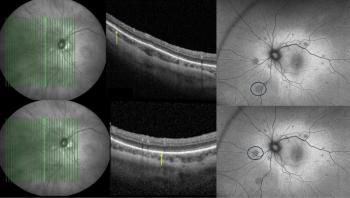
Searching for uveitis: How to ensure you don’t miss a diagnosis
Dr Yasha S. Modi discusses his best tips and tricks for finding and diagnosing infectious uveitis.
Dr Yasha S. Modi presented a talk entitled, “How to not miss infectious uveitis” at Retina World Congress in Fort Lauderdale, Florida, United States. He offers his best tips and tricks to catch uveitis, differentiate between infectious and noninfectious uveitis, and more.
Video transcript
It's been a wonderful day in Fort Lauderdale at Retina World Congress and we wanted to just talk a little bit about the algorithmic creation in the way in which we approach patients with uveitis.
So, you know, uveitis patients can oftentimes be a daunting patient in the office. So using an algorithmic approach, we can employ the same strategy for every patient, and sort of ensure that we're not missing infectious uveitis. And that's sort of one of the most concerning features, is that first sort of branch point in uveitis patients. Is this infectious? Or is this not infectious? And oftentimes, there's a couple of little lessons that we've learned in the process.
So the first lesson is, you know, if the retina's white, that's frequently going to be a case where you have to have a very high pre-test probability that this is an infectious aetiology. So those are the circumstances where we may be thinking about syphilis, acute retinal necrosis, even CMV, and sort of testing appropriately to those things.
Now, the other thing is a lot of times in uveitis, especially if somebody comes in with very advanced disease, there's no view posteriorly, and that can make it very, very challenging to understand how to approach these patients. And in those circumstances, you really want to treat to the most severe entity. So if you can't see, you have to assume that this is either acute retinal necrosis or endogenous endophthalmitis and treat to those severe entities. So sometimes a vitreous tap for culture an AC tap for viruses, and then injections of foscarnet, vancomycin ... While that may seem extreme, it arguably may be the most conservative strategy to get the best possible outcome.
And then finally, we're retina specialist; we love imaging. And so I love to use imaging when I get the opportunity. So if I see a lesion in the posterior pole, I want to get OCT imaging through it autofluorescence imaging and what I'm looking for, especially like on OCT, what layers of the retina are affected.
So in syphilitic posterior placoid chorioretinitis, we frequently have an outer retinal disease process, as opposed to CMV retinitis, we frequently have a full thickness, retinitis and in toxoplasmosis, or tuberculosis, we will oftentimes have a chorioretinitis, and so that can be visualized on OCT and can take a what would otherwise be broad differential and make it quite specific.
So that was the function of this talk, and the goal was just to teach to talk about a couple of pearls that I've learned over the course of the last few years that made uveitis management easier for me.
Newsletter
Get the essential updates shaping the future of pharma manufacturing and compliance—subscribe today to Pharmaceutical Technology and never miss a breakthrough.













































